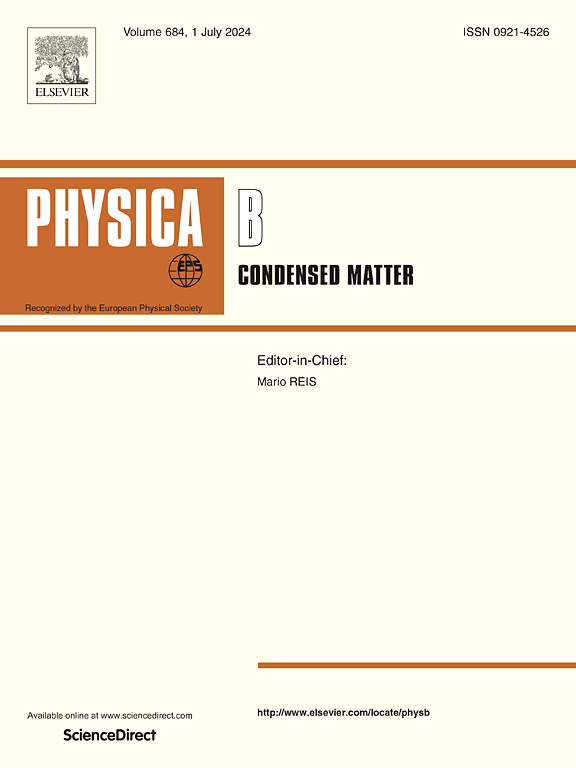Uranium at the conditions of the Earth’s inner core: Fe-U forms and implications
IF 2.8
3区 物理与天体物理
Q2 PHYSICS, CONDENSED MATTER
引用次数: 0
Abstract
We have carried out density functional theory (DFT) calculations to study the form on which U exists inside the Earth's inner core. The question of whether U exists in the inner core at all has been controversial and attracted a lot of attention because of its potential role in the Earth's heat budget as a radioactive element. We have carried an extensive structural search and then calculated the stability, at the pressure of the inner core, of Fe-U systems in various forms: pure crystalline U, FeUn (n=1…4) compounds, and U impurities in bulk crystalline Fe, both in its bcc (α-Fe) and hcp (ε-Fe) phases. We have found that Fe-U compounds will not form in the inner core, and if they form, they are thermodynamically unstable, which agrees with the literature. However, we have found that U as point defects in crystalline Fe may exist under certain conditions. These U impurities appear to stabilize the α-Fe phase significantly, which lowers the barrier of the phase transitions between ε-Fe and α-Fe phase transition. This is a potentially quite significant contribution to the Earth's energy budget.
地球内核条件下的铀:铁-铀的形态及其意义
我们进行了密度泛函理论(DFT)计算,以研究铀在地球内核中的存在形式。由于铀作为放射性元素在地球热量预算中的潜在作用,它在内核中是否存在的问题一直备受争议和关注。我们进行了广泛的结构搜索,然后计算了在内核压力下各种形式的 Fe-U 系统的稳定性:纯结晶 U、FeUn(n=1...4)化合物和块状结晶 Fe 中的 U 杂质,包括 bcc(α-Fe)和 hcp(ε-Fe)相。我们发现,Fe-U 化合物不会在内核中形成,即使形成,它们在热力学上也是不稳定的,这与文献记载一致。不过,我们发现,在某些条件下,结晶铁中可能存在作为点缺陷的 U。这些铀杂质似乎能显著稳定α-铁相,从而降低ε-铁和α-铁相变之间的相变势垒。这可能对地球的能量预算有相当大的贡献。
本文章由计算机程序翻译,如有差异,请以英文原文为准。
求助全文
约1分钟内获得全文
求助全文
来源期刊

Physica B-condensed Matter
物理-物理:凝聚态物理
CiteScore
4.90
自引率
7.10%
发文量
703
审稿时长
44 days
期刊介绍:
Physica B: Condensed Matter comprises all condensed matter and material physics that involve theoretical, computational and experimental work.
Papers should contain further developments and a proper discussion on the physics of experimental or theoretical results in one of the following areas:
-Magnetism
-Materials physics
-Nanostructures and nanomaterials
-Optics and optical materials
-Quantum materials
-Semiconductors
-Strongly correlated systems
-Superconductivity
-Surfaces and interfaces
 求助内容:
求助内容: 应助结果提醒方式:
应助结果提醒方式:


